| The Old Buzzards Scheme |
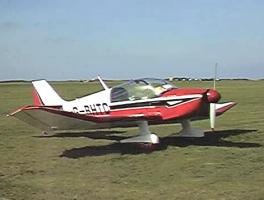 |
| The Old Buzzards Scheme |
 |
The principal compensation of the ‘Old Buzzards’
scheme for the generous pilot/owner is that rarely does one have to reassure
anxious parents that their cherished offspring are perfectly safe, and that
aircraft do sometimes have to “lean right over”.
Just such an opportunity arose recently when one of
our number offered a bit of Jodelling to a novice strut member, and an old
friend Bill.
Making most use of the fabulous pre-Easter weather, Graham suggested a
day trip from Kemble to Perranporth. Initial
thoughts were for Bodmin, but with 3-up in the Sicile and one of those not much
short of 100kg, hard runways of fair length were felt a safer option.
With front tank full, and enough in the main tank under the seat for
taxiing and a safety margin, the CG calculations were considered satisfactory
for G-BHTC to set out.
Waiting just long enough for the mist to
clear at the destination, the trio got airborne at 1130 hrs and headed 220 magnetic at 2,500 feet,
towards the Mendip mast and the South-West.
Bristol ATC was heard to warn traffic of a “slow
moving” aircraft - cheek! At 105
knots IAS and 2400 rpm on the Potez engine, that was a good speed.
 |
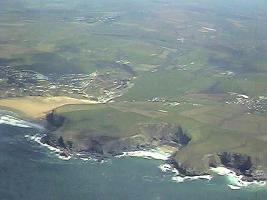 |
Lakes, rivers, main roads and railway lines (dis.) all passed below, clearly visible in the superb glass-clear new bubble canopy expertly-fitted over the winter by Graham. Bridgewater slipped by, Hinckley Point, the Blackdown Hills, Exmoor and then the surf beaches of North Devon and Cornwall appeared along with their RAF Coastal Command stations - St Merryn (see last Newsletter), St Eval and St Mawgan - only the last still active. Then it was Newquay, its harbour clearly visible, and soon after Perranporth with long surf-driven beach, town, and the airfield perched on the cliff top. A couple of gliders were the first nearby aircraft seen on the flight.
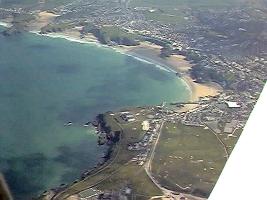 |
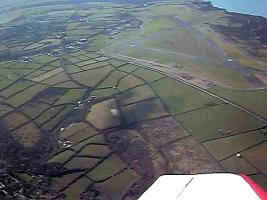 |
After a circuit to assess conditions, the Jodel
glided gently towards the threshold of 09, a bit of power, a request to use the
grass runway alongside the tarmac to help make a gentle touchdown in the gusting 140º
side-wind, and all were down safely after a flight of just 90 minutes.
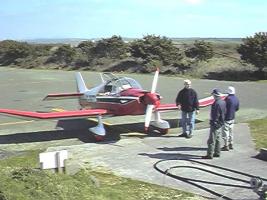 |
 |
Once refuelled, picnic
lunch was taken on the sheltered side of a small headland looking out at the
blue-green sea, white surf and the magnificent cliffs, with an unusually
convoluted orange-red rock strata that would seriously challenge a geologist to
interpret.
A stiff walk down the path
and over the next headland led to a ‘Pub-fall’ where a tea-tray placed
somewhat incongruously on the bar, refreshed the three.
If not actually the last of the summer wine, there seemed at least
a slight hint of it in this group of three.
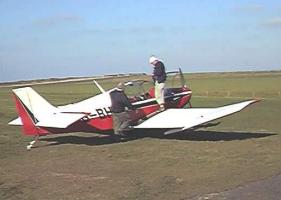 |
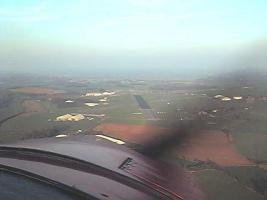 |
Regaining the Jodel, Bill and Dave swapped places for the flight back
and then took off, the wind much more gentle now, but with a headwind component
making the return leg to Kemble take slightly longer.
Oh, and we did see a real Buzzard just after take-off from Perranporth.
Dave H. (March 2002)